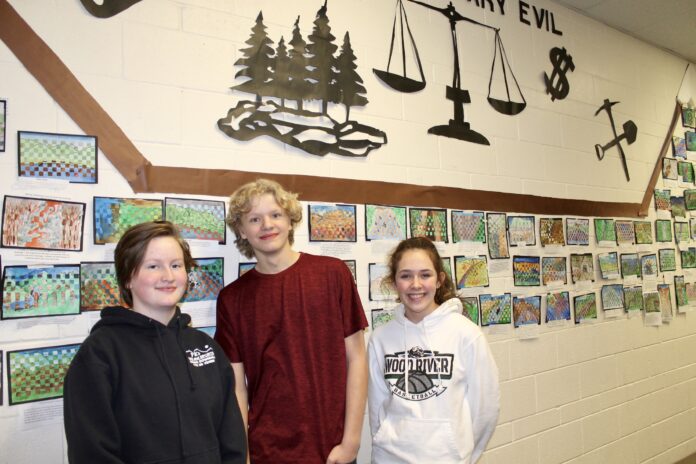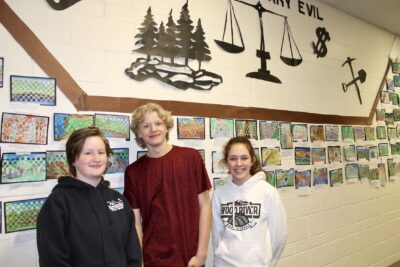
Middle schoolers take middle-of-the-road look at polarizing topic
BY ERIC VALENTINE

In a world of polarized opinions, it’s refreshing to see anyone take a balanced approach and intriguing to see anyone take an artistic approach. What makes it impressive is when those approaches come out of a middle-school program.
What follows is an overview of an eighth-grade Wood River Middle School project done in connection with Sun Valley Museum of Art, written by teacher Stephen Poklemba. Give it a read and perhaps even take a moment to realize that the divisiveness in our adult worlds may one day, perhaps like mining, be a thing of the past.
“According to the U.S. Mineral Information Institute, 130 million cell phones are retired each year. That amounts to 2,100 metric tons of copper, 46 metric tons of silver, 3.9 metric tons of gold and 2 metric tons of palladium. These metals can be recycled, but puts into perspective our need for such resources.
“The eighth-grade science students of Wood River Middle School, in conjunction with the Sun Valley Museum of Art, tackled the complex issues surrounding mining. Is mining good or bad? Like most complex issues, there is never an easy answer, though the simple answer to the above question ended up being neither choice. The students discovered that the answer might be, mining is necessary. Which, like good science, lead them to ask more questions that needed investigation.
“Since mining is necessary (right now, anyway), the students looked into the human impact mining had on the natural landscape. Jordyn Dooley and Susie Quinn Fortner from the Sun Valley Museum of Art came down to the middle school and helped the students frame the impact using watercolor paintings and a weaving technique inspired by Vermont artist Deidre Scherer.
“Students researched mining sites before, during and after the minerals were discovered. They then selected two versions of the site and created two watercolor paintings. Just like the activity of mining, the students altered their paintings by cutting them into strips, then wove them back together. The resulting art piece, though pleasing, emphasized the fact that the two watercolors would never be the same again, mirroring what happens to a landscape post-mining.”


